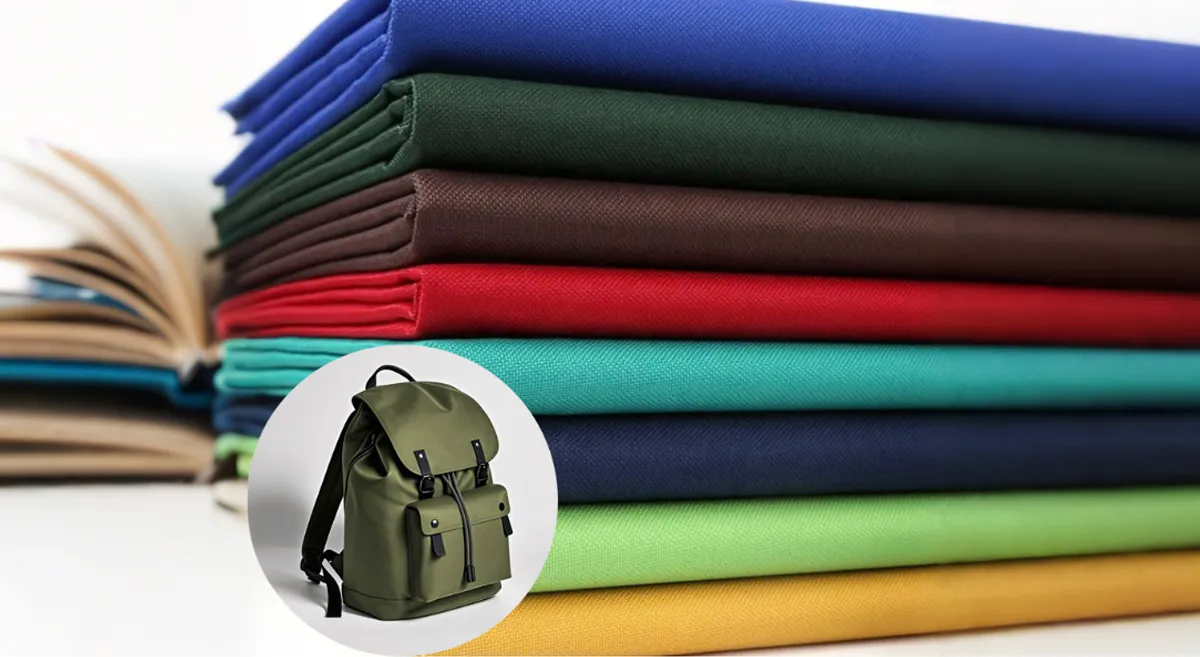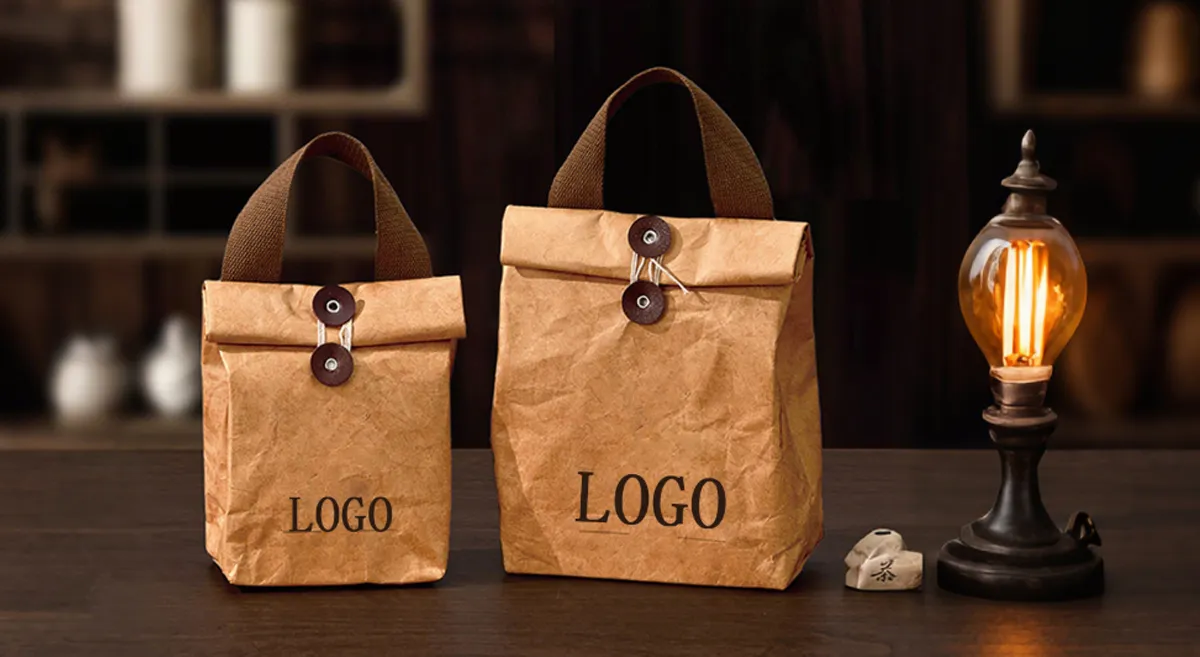You can jump right into sewing with this zipper pouch tutorial, even if you are a beginner. If you ever wondered how to make a zipper pouch, you just need a clear set of instructions and a little patience. Many people find sewing zippers tricky at first, but you can use extra seam allowance and fabric glue to help control the fabric edges. When you follow each step in the written tutorial, you will see your skills improve. Practice helps you make a zippered pouch that looks neat and works well. This written tutorial gives you instructions that make each part easy to follow. Try different fabrics to add your own style. With every try, your pouch will look better. This zipper pouch tutorial uses instructions that guide you from start to finish, so you won’t feel lost. Let’s get started with the written tutorial and see how your pouch turns out!

Key Takeaways
- Get all your supplies before you begin. Pick strong fabric for the outside. Use soft fabric for the lining.
- Pick a zipper that is the right length. The zipper should be 1-2 inches longer than the pouch. This makes sewing easier.
- Measure your fabric carefully. Cut it with a rotary cutter. Follow the grain line to keep edges neat.
- Use fabric glue to hold the pieces together. This stops the fabric from moving when you sew. It makes sewing easier.
- Try the Butler Method for a neat finish. This way, you can fold the zipper ends nicely. Your pouch will look polished.
- Press your pouch when you finish. Ironing makes the seams flat. It also helps the pouch keep its shape.
- Make your pouch special with personal touches. Add embroidery, labels, or mix different fabrics.
- Keep practicing to get better. Try making pouches in different sizes and styles. This will help you sew better over time.
How to Make a Zipper Pouch: Supplies & Prep

Before you dive into your zipper pouch tutorial, you need to gather the right supplies. Picking the best materials and tools makes your project easier and helps you get a neat finish. Let’s break down what you need for a beginner-friendly zipper pouch.
Fabric and Lining
Choosing Beginner-Friendly Fabrics
You want fabric that’s easy to handle and looks good. Sturdy fabrics like linen, canvas, or home décor cotton work well for the outside. They hold their shape and make your pouch feel strong. Softer fabrics, such as Liberty of London Tana Lawn, are perfect for the lining. They feel smooth and add a nice touch inside your pouch.
| Fabric Type | Purpose |
|---|---|
| Sturdy Fabrics (linen, canvas) | Exterior of the pouch |
| Softer Fabrics (Tana Lawn, cotton) | Lining of the pouch |
Lining Options
Cotton canvas gives your pouch a rustic, natural look. It’s durable and reusable, so your pouch lasts longer. Quilting cotton is another great choice. It holds its shape without adding bulk, presses well, and doesn’t shift while you sew. Both options make your zipper pouch tutorial easier and help your pouch look professional.
Zipper Selection
Zipper Length Tips
For a zipper length of 6 inches, your pouch width should be about 7.7 inches to fit the seam allowance. If your zipper is shorter, add 4.5 cm (1 3/4 inches) to the zipper length for a good fit. Always choose a zipper that’s 1-2 inches longer than your pouch width. This tip makes sewing and finishing much easier.
Types for Beginners
When you pick a zipper, think about its purpose and the fabric you’re using. Metal or nylon zippers work for most beginner projects. Closed-ended zippers are simple to install and suit small pouches. Common sizes like #3 and #5 fit most zipper pouch supplies.
| Factor | Explanation |
|---|---|
| Purpose of the zipper | Is it functional or decorative? This affects how you install it. |
| Garment type and fabric weight | Heavier fabrics need sturdier zippers. |
| Zipper length and teeth width | Choose a size that matches your pouch. #3 and #5 are easy for beginners. |
Tools Needed
Basic Sewing Tools
You need a few basic tools for your zipper pouch tutorial:
- Two pieces of outer fabric
- Two pieces of lining fabric
- Zipper (length matches pouch)
- Sewing machine
- Medium weight fusible interfacing
- Basic sewing supplies (scissors, pins, thread)
Optional Extras
Fabric glue helps you hold pieces in place before sewing. It’s a handy trick for beginners. You can also use a zipper foot for your sewing machine. This tool lets you sew close to the zipper teeth for a neat finish.
The Butler Method is a beginner-friendly technique for finishing zipper ends. You fold the ends simply, which gives your pouch a tidy look. This method makes your zipper pouch tutorial easier and helps you get a polished result.
Now you know how to make a zipper pouch with the right supplies. Gather your zipper pouch supplies and get ready for the next steps in your tutorial!
How to Sew a Zipper Pouch: Cutting & Measuring
Getting your fabric and zipper ready is a big part of how to sew a zipper pouch. This step sets you up for a smooth sewing experience. If you want your pouch to look neat, you need to measure and cut everything with care. Let’s walk through this part of the tutorial together.
Measuring Zipper and Fabric
Standard Dimensions
You might wonder what size to cut for your first pouch. Here’s a quick guide to help you pick the right size for your tutorial:
| Size | Width | Height | Depth |
|---|---|---|---|
| Small Zipper Pouch | 5 ½” | 3″ | 2″ |
| Large Zipper Pouch | 7 ½” | 4 ½” | 2″ |
These sizes work well for most beginner projects. You can always adjust them to fit your needs or try different sizes as you get more comfortable with the tutorial.
Accurate Cutting Tips
You want your pouch to look sharp, so measuring and cutting matter a lot. Here are some tips to help you get it right:
- Lay the zipper flat on a clean surface.
- Measure the teeth section from the top stop to the bottom stop. Do not include the fabric tape.
- Make sure the zipper is fully closed before you measure.
- Align fabric edges with grid lines on your cutting mat.
- Use a rotary cutter for smooth, long cuts, especially if you have more than one layer.
- Follow the fabric’s grain line to keep the shape.
- Use a ruler or laser guide for straight lines.
Tip: Double-check your measurements before you cut. It saves you time and fabric!
Preparing Pieces
Sandwiching Fabric
Now you’re ready to put your pieces together. This part of the tutorial helps you line up everything for sewing. Place your fabric piece right-side-up. Next, position the zipper right-side-down along the top long edge of the fabric. This “sandwich” keeps the zipper in the right spot and makes the next steps in how to sew a zipper pouch much easier.
Using Glue for Assembly
If you want your pieces to stay put, try using a little fabric glue. Glue basting gives you stability and precision. It makes the tutorial less stressful because you don’t have to worry about pins or clips moving around. Heat set the glue with an iron so the layers stay together while you sew. Many beginners find this trick helpful for their first zipper pouch.
You’ve finished the cutting and measuring part of the tutorial! Now you’re ready to move on to sewing and see your pouch come together.
Zipper Pouch Tutorial: Assembly Steps
You have your fabric and zipper ready. Now, you get to the fun part—putting it all together! This zipper pouch tutorial will walk you through each step. You will see how easy it is to sew a zipper pouch when you follow these simple instructions. Let’s start with attaching the zipper.
Attaching the Zipper
Pinning and Aligning
Lay your outer fabric piece right-side up. Place the zipper face down along the top edge. Put the lining fabric right-side down on top of the zipper. You now have a fabric-zipper-fabric sandwich. Make sure all the edges line up. Use pins or clips to hold everything in place. If you want extra control, use a little fabric glue. This trick helps keep the zipper from shifting while you sew.
Tip: The Butler Method makes sewing zippers much easier for beginners. Fold the zipper ends under before you sew. This gives your pouch a neat finish and keeps the zipper ends from poking out.
Check that the zipper pull is facing the right way. Double-check your alignment before you start sewing. A straight zipper makes your pouch look professional.
Using Zipper Foot
Attach the zipper foot to your sewing machine. This special foot lets you sew close to the zipper teeth. Start sewing at one end of the zipper. Go slowly and keep your stitches straight. Remove pins or clips as you sew. When you reach the zipper pull, stop with the needle down. Lift the presser foot and slide the pull past the needle. Lower the foot and keep sewing to the end.
Repeat these steps for the other side of the zipper. Place the second outer fabric piece right-side up. Lay the pouch with the zipper attached on top, right-side down. Add the second lining piece on top, right-side down. Pin or glue, then sew along the zipper edge again.
Note: Sewing both sides of the zipper now means your pouch will open and close smoothly. This step is key in every zipper pouch tutorial.
Sewing Sides and Bottom
Straight Seams
Open the pouch so the outer fabrics are right sides together and the linings are right sides together. Match up all the edges. Pin or clip around the sides and bottom. Leave a small gap (about 2-3 inches) in the lining for turning the pouch right-side out later.
Start sewing at one side of the lining gap. Sew down the side, across the bottom, and up the other side. Use a 1/4-inch seam allowance. Keep your stitches straight for a crisp look. When you reach the corners, stop with the needle down, lift the presser foot, and turn the fabric. This helps you get sharp corners.
Tip: Backstitch at the start and end of your seams. This keeps your stitches from coming undone.
Finishing Edges
Trim the seam allowances to reduce bulk. Clip the corners at an angle, but don’t cut through your stitches. If you want, use pinking shears or a zigzag stitch to finish the raw edges. This keeps the fabric from fraying.
Here’s a quick checklist for this part of the tutorial:
- Sew both sides and the bottom of the pouch
- Leave a gap in the lining
- Trim seam allowances and clip corners
- Finish raw edges if needed
Remember: Sewing the side and bottom seams completes the pouch structure. You are almost done!
You just learned how to make a zipper pouch by following these assembly steps. This zipper pouch tutorial shows you that sewing can be simple and fun. Keep practicing, and you will get better with every pouch you make. If you want to sew a zipper pouch that looks even more polished, try the Butler Method for the zipper ends. This technique gives your pouch a professional finish.
Now you are ready for the final steps in the tutorial—turning and finishing your pouch!
Sew a Zipper Pouch: Turning & Finishing
Turning Right Side Out
You have finished sewing the sides and bottom of your pouch. Now comes the exciting part—turning your pouch right side out. This step brings your project to life and lets you see the results of your tutorial.
- Put your hand through the hole in the lining and gently pull the entire pouch through.
- Make sure all the right sides of the fabric are facing out.
- Poke out the corners and push the lining into the pouch.
- Use a pointer tool or your fingers to help with the corners.
Crisp Corners
You want your pouch to look sharp and professional. Here are some easy ways to get crisp corners:
- Clip the corners carefully, but do not cut into the seam line.
- Push the corners out gently after turning the pouch right side out.
If you follow these steps, your pouch will have neat edges that stand out. This part of the tutorial helps your pouch look finished and tidy.
Fixing Minor Issues
Sometimes, you might notice small problems after turning your pouch. Maybe a corner looks soft or the lining bunches up. You can fix these issues with a few simple tricks:
- Use your fingers or a blunt tool to shape the corners.
- Smooth out the lining and tuck it inside the pouch.
- If you see loose threads, trim them with scissors.
Take your time with this part of the tutorial. Small fixes make a big difference in the final look.
Final Touches
You are almost done with your zipper pouch tutorial. Adding final touches makes your pouch look polished and unique.
Pressing and Shaping
A little pressing goes a long way. Here is a step-by-step guide to help you finish strong:
- Tuck in the raw edges of the opening.
- Sew the opening closed by hand or machine, close to the fold.
- Pull the pouch right side out through the opening left in the lining.
- Tuck in the raw edges of the opening and sew it closed using a small seam allowance.
- Push the lining into the exterior and press around the entire opening and carefully along the zipper.
- Topstitch around the entire opening of the pouch using a slightly longer stitch length.
Iron your finished pouch for a crisp, professional look. Pressing helps set the seams and gives your pouch a neat shape.
Decorative Details
You can make your pouch stand out by adding creative details. Check out these ideas to personalize your tutorial project:
| Suggestion Type | Description |
|---|---|
| Fabric Choices | Use printed canvas, faux leather, or linen blends for a unique look. |
| Decorative Elements | Add patches, embroidery, or decorative topstitching for flair. |
| Functional Additions | Incorporate contrasting zipper colors or a wrist strap for added functionality. |
| Material Combinations | Pair cotton exterior with waterproof laminated lining for practical use. |
| Chic Aesthetics | Velvet or faux suede with gold or silver zippers creates a modern, stylish appearance. |
You can also choose a lining fabric that complements the exterior. A bright lining gives a pleasant surprise when you open the pouch. Decide if you want a matching zipper for a classic look or a contrasting color for a pop of fun.
This tutorial shows you how easy it is to add your own style. Try different fabrics, colors, and details to make each pouch special.
Troubleshooting
You might run into a few bumps while following this tutorial. That’s normal! Every beginner faces challenges, but you can fix most problems quickly. Let’s look at some common mistakes and easy ways to solve them. If you learn best by watching, a video tutorial can help you see each step in action. Many people find that a video makes the tutorial easier to understand.
Common Mistakes
Crooked Zippers
A crooked zipper can make your pouch look messy. You might notice the zipper waves or sits unevenly. Here are some reasons this happens:
- You skipped basting or clipping the layers before sewing.
- You rushed the cutting process, so the edges don’t line up.
- You used poor quality zip tape.
- You didn’t press the fabric before sewing.
Quick Fixes:
- Use wonder clips to hold the zipper and fabric in place.
- Press the fabric and zipper flat before sewing.
- Watch a video tutorial to see how to align the zipper step by step.
Uneven Seams
Uneven seams can make your pouch look lopsided. You might see the edges don’t match or the pouch feels flimsy. Here’s what causes this:
- You ignored seam allowances in the tutorial.
- You didn’t test your stitch length.
- You used the wrong needle size.
- You skipped interfacing or stabilizer.
Quick Fixes:
- Double-check your seam allowance before sewing.
- Change your needle if it feels dull.
- Try a video tutorial for tips on keeping seams straight.
Tip: If you want to see how experts fix mistakes, search for a video tutorial that shows common errors and solutions.
Beginner Tips
Keeping Seams Straight
Straight seams make your pouch look neat. You can use these tips from the tutorial to help:
- Use good quality zip tape for a flat finish.
- Position wonder clips correctly so the fabric doesn’t shift.
- Try a standard presser foot instead of a zipper foot for better guidance.
- Baste one side at a time for a tidy look.
- Press fabrics before topstitching.
If you want to see these steps, a video tutorial can show you exactly how to keep seams straight. Many beginners find that a video makes the tutorial easier to follow.
Working with Different Fabrics
Some fabrics are tricky. Thick canvas or slippery lining can cause problems. Here’s how you can handle them:
- Use the right needle size for your fabric.
- Add interfacing for stability.
- Test your stitch length on a scrap piece.
- Watch a video tutorial that covers different fabric types.
Note: If you get stuck, a video can show you how to fix mistakes and improve your technique. Many tutorials include both written and video instructions, so you can choose what works best for you.
If you want more help, look for an easy sewing zipper pouch video tutorial. You’ll see every step, from cutting to finishing. Watching a video can make the tutorial feel less confusing and more fun. Try different video tutorials until you find one that matches your learning style. You’ll get better with every pouch you make!
Customization Ideas
You can make your zipper pouch stand out with a few creative choices. This part of the tutorial will help you explore fun ways to add color, patterns, and personal touches. You do not need to be an expert to try these ideas. Just pick what you like and have fun with your project.
Fabric Patterns
Mixing Colors
Mixing colors is a great way to make your pouch pop. You can use two different fabrics for the front and back. Try a bright color with a neutral one. You can also use scraps from other projects. This tutorial lets you play with color blocking or patchwork. If you want a bold look, pick fabrics with big prints. For a softer style, choose pastels or small patterns.
- Try these combinations:
- Blue and yellow for a cheerful vibe
- Black and white for a classic look
- Pink and green for something fresh
Tip: Lay your fabric pieces next to each other before you sew. This helps you see how the colors work together.
Seasonal Themes
You can match your pouch to the season. Use red and green for winter holidays. Pick orange and brown for fall. Try florals for spring or bright stripes for summer. This tutorial gives you the freedom to change your pouch with the seasons. You can even make a set of pouches for different times of the year.
Personal Touches
Adding personal touches makes your pouch unique. You can use embroidery, labels, or even your own designs. This tutorial encourages you to try new things and show off your style.
Embroidery
Embroidery lets you add custom drawings or words to your pouch. You can stitch your name, a favorite shape, or a small picture. Cotton and canvas work best for embroidery. You do not need fancy tools—just a needle, thread, and a little patience.
| Personalization Type | Description |
|---|---|
| Embroidery | Custom drawings can be embroidered onto cotton and canvas pouches, allowing for unique personal expression. |
Try drawing your design on the fabric first with a pencil. Then follow the lines with your stitches.
Labels & Tags
Labels and tags help you add a finishing touch. You can sew a small tag with your name or a special message inside the pouch. Some people like to use iron-on labels or fabric markers. You can also create your own design for the label.
| Personalization Type | Description |
|---|---|
| Custom Designs | Users can personalize pouches with over 525 starting designs or create their own, including options for names, initials, and monograms. |
- Ideas for labels and tags:
- Add your initials for a classic look
- Use a fun nickname or word
- Make a tag that matches the fabric pattern
This tutorial shows you that even small details can make a big difference. Try out different ideas and see what you like best. Your pouch will be one of a kind!
Practice Projects & Next Steps
You have finished your first zipper pouch. Now, you might wonder what to do next. This tutorial gives you lots of ways to keep learning and having fun. You can try new sizes, shapes, and styles. You will see your skills grow every time you sew a simple pouch.
Different Sizes
Changing the size of your pouch is easy. You can use the same steps from the tutorial. Just adjust your fabric and zipper measurements. Here are two popular ideas:
Pencil Case
A pencil case is a great project for beginners. You can use sturdy cotton or canvas. Cut your fabric to about 9 inches by 4 inches. Pick a zipper that is at least 10 inches long. Follow the tutorial steps to sew a simple pouch. You will have a handy case for pens and pencils.
Makeup Bag
A makeup bag lets you play with fun fabrics. Try waterproof lining for easy cleaning. Cut your fabric to 8 inches by 6 inches. Use a zipper that is 9 or 10 inches long. The tutorial helps you sew a simple pouch that holds brushes, lip balm, and more.
Tip: You can finish a lined zipper pouch in about 15 minutes once you get the hang of the tutorial steps.
Advancing Skills
Ready to try something new? You can use this tutorial to learn more advanced techniques. Practice makes you better, so keep sewing and experimenting.
Lined Pouches
Adding a lining makes your pouch look professional. You can use soft cotton or even waterproof fabric. The tutorial shows you how to sandwich the lining with the outer fabric and zipper. You will get a neat finish inside and out.
| Project Type | Skill Level | Time Needed |
|---|---|---|
| Basic Pouch | Beginner | 10 minutes |
| Lined Pouch | Beginner | 15 minutes |
| Pencil Case | Beginner | 15 minutes |
| Makeup Bag | Beginner | 20 minutes |
Other Bag Types
You can use the tutorial steps to make other bags. Try a coin purse, tablet sleeve, or even a small tote. Change the size and shape to fit your needs. You can add pockets, straps, or special details. Each time you sew a simple pouch, you learn something new.
Keep practicing. Try different fabrics, zippers, and designs. You will get faster and more confident with every project.
You have learned how to sew a simple pouch and use the tutorial for many projects. Keep exploring and enjoy your sewing journey!
Conclusion
You finished your first zipper pouch tutorial! Making a pouch is simple if you follow each step. Try using new fabrics or colors next time. Each time you use this tutorial, you learn more and get better. Keep practicing to improve your skills.
Do you want more than just a DIY pouch? You can contact us for professional bag making, custom wholesale, or OEM/ODM services. We can help turn your tutorial ideas into real products!
- Try new designs with every tutorial
- Show your finished pouch to your friends
FAQ
How long does it take to finish a zipper pouch?
You can finish a basic pouch in about 15 to 20 minutes. If you follow each step in the tutorial, you will work faster with practice. Try timing yourself for fun!
What fabric works best for beginners?
Cotton and canvas are easy to handle. You can use these fabrics for your first pouch. The tutorial suggests sturdy fabric for the outside and soft cotton for the lining.
Can I sew a zipper pouch without a sewing machine?
Yes, you can sew by hand. Use small, tight stitches for strong seams. The tutorial gives you tips for both machine and hand sewing. Hand sewing takes longer but works well for small pouches.
Why does my zipper look crooked?
Your zipper might shift while you sew. Use clips or glue to hold it in place. The tutorial recommends checking alignment before stitching. You can fix crooked zippers by resewing that section.
How do I make my pouch corners sharp?
Clip the corners before turning your pouch right side out. Use a blunt tool to push them out. The tutorial shows you how to get crisp corners with simple tricks.
Can I wash my zipper pouch?
You can wash most pouches made from cotton or canvas. Use gentle soap and cold water. The tutorial suggests checking your fabric type first. Air dry your pouch to keep its shape.
What if I want to make a bigger pouch?
Change the measurements in the tutorial to fit your needs. Use a longer zipper and larger fabric pieces. You can make pencil cases, makeup bags, or even tablet sleeves by adjusting the size.
Tip: If you get stuck, watch a video tutorial for extra help. Seeing each step makes learning easier.
| Problem | Quick Fix |
|---|---|
| Crooked zipper | Reseam section |
| Soft corners | Clip and shape |
| Uneven seams | Sew slowly |




